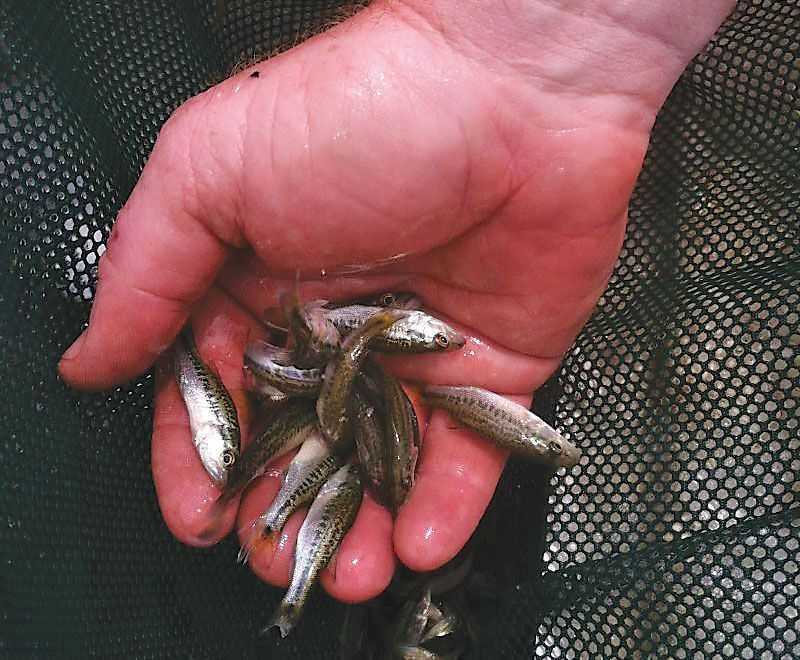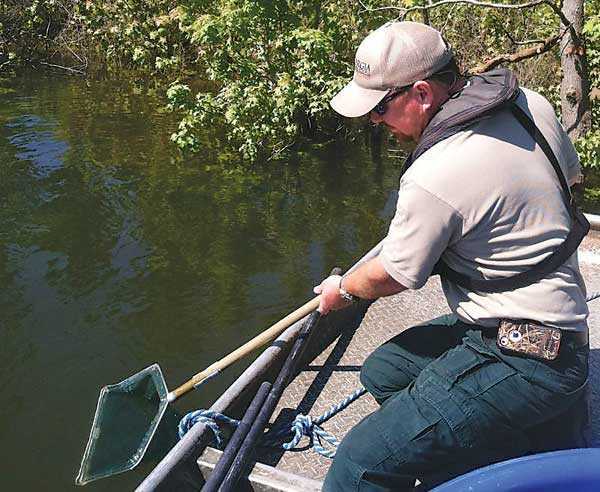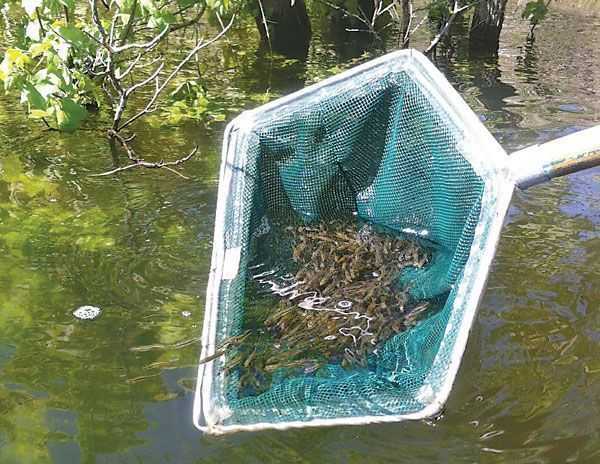For decades the bass fishery at Lake Allatoona has been dominated by spotted bass. In a few years, anglers may see a welcome change because of a state program to stock largemouth bass in the Atlanta-area reservoir.
Early this summer, the Georgia Wildlife Resources Division stocked nearly a quarter million largemouth bass from 1 to 2 inches in length into Allatoona. Another several thousand largemouths from 5 to 8 inches in length will be stocked this fall. This stocking schedule will continue through 2015, after which WRD will monitor populations through 2018 to determine if the program is having the desired result of increasing the abundance of largemouths.
The Allatoona fishery has suffered the same woes as many reservoirs with Alabama spotted bass. Over time, populations of aggressive spots grow, while largemouth populations fall off. Many anglers prefer largemouths because they grow larger than spotted bass, and Allatoona was once a good lake for largemouth fishing. The lake record largemouth of 16-pounds, 9-ounces was caught back in 1982. According to WRD Fisheries Biologist Jim Hakala, the largemouth fishery has been in decline since the late 1980s. Largemouth bass once made up 40 to 50 percent of the total black bass population on Allatoona. Now they account for just 10 to 20 percent.
“Ever since I’ve worked here, people have been asking, ‘When you gonna stock some largemouths,’” said Hakala. “Especially the old timers. They remember when you could catch a lot more largemouths than spots.”
But the old timers will have to wait at least three years before this summer’s stocked fish reach catchable size of about 12 inches. It will be several more years before those fish reach trophy proportions, if they do at all. To monitor these stocked fish in future sampling, WRD has marked them by staining a bone in their inner ears. These markings will not be evident to anglers. The hope is a large influx of largemouth bass over the next few years will boost the already present largemouth population so it makes up a larger percentage of the total black bass in the lake.
WRD took steps to decrease mortality of these tiny fingerlings as they grow. Hakala said the high water this summer created optimal conditions with all the newly flooded cover in the backs of the creeks and coves. Boats were used to carefully disperse the stocked fish lakewide in suitable largemouth habitat.
Similar projects have been conducted nationwide with mixed results. Tennessee’s Lake Chickamauga, which has recently been producing some unbelievably good bass fishing, was stocked with Florida-strain largemouth bass in 2000. Florida largemouths reach larger sizes than fish with typical Georgia genetics. Allatoona is getting fish with the genetics found in most wild Georgia populations.
Another largemouth stocking study is ongoing at north Georgia’s Lake Nottely, where largemouth numbers were on the decline. Hakala said it seems to be working, and the relative abundance of largemouth bass is now rising. The degree of success of the Allatoona project will help steer future management of the reservoir and could provide impetus for similar projects on other Georgia lakes.
Hakala said it’s tough to pin down the reason spotted bass are dominating on some lakes. On Allatoona, he said it has to do with the proclivity for spots to outcompete largemouth bass, but habitat and winter drawdowns may also be playing a role. The lake was dammed in 1949, and the bed was clearcut prior to construction. Since that time, most of the woody cover largemouths love has either rotted away or been silted in. What remains is plenty of the rocky structure spotted bass prefer.
This stocking program is another attempt to improve the fishery on one of Georgia’s most-popular lakes. Along with habitat improvement projects and a slot limit on spotted bass that never made it past the court of public opinion, there has been a lot of effort by the state as well as by the public on this reservoir that was once known as The Dead Sea.
“In my career, I’ve devoted a lot of time to Allatoona trying to improve that fishery,” he said. “It’s one of the most-used Army Corps facilities in the nation. It justifies putting a lot of effort into it. It gets a lot of use.”
[easy-social-share]


